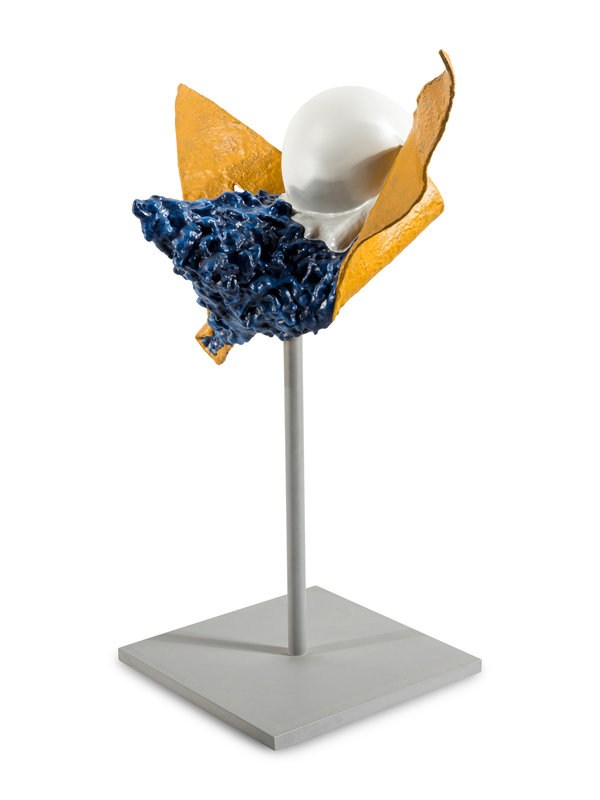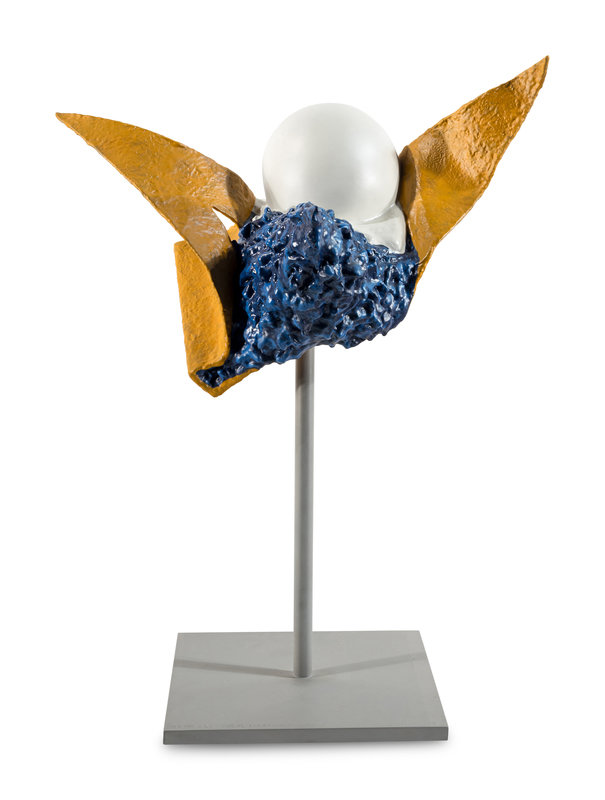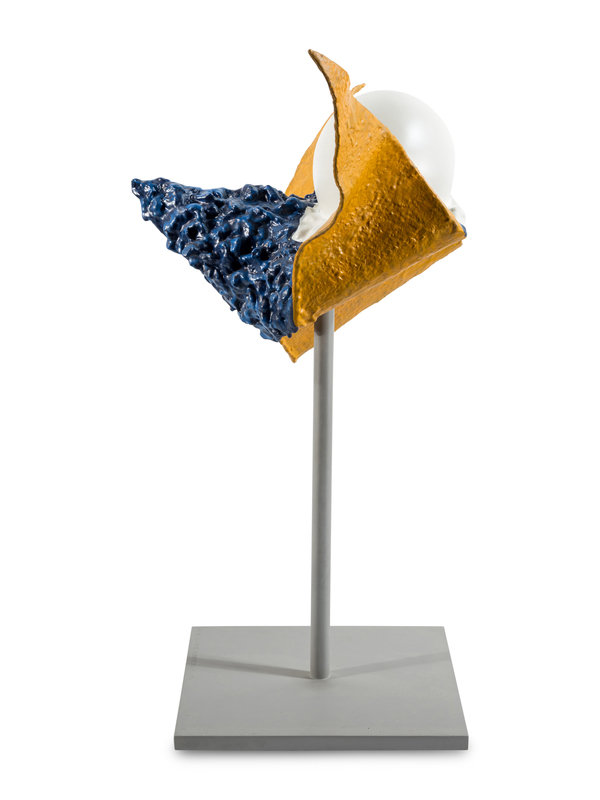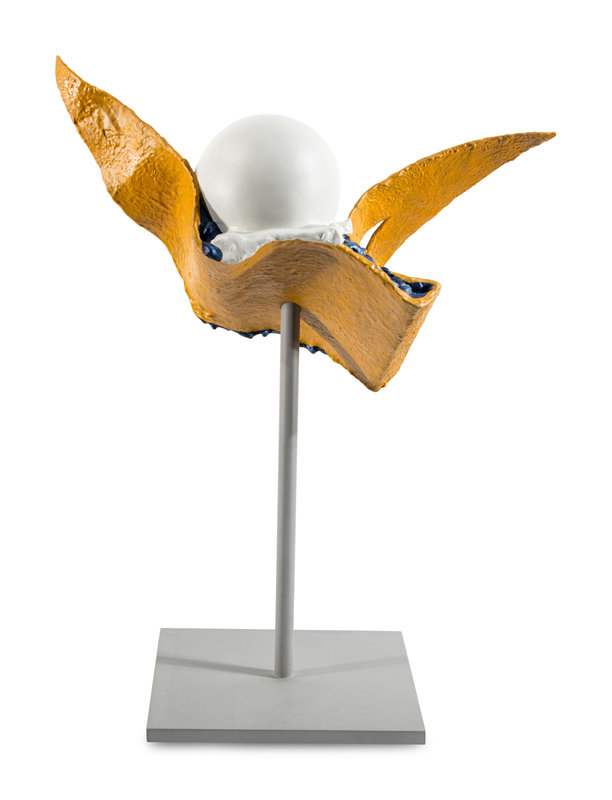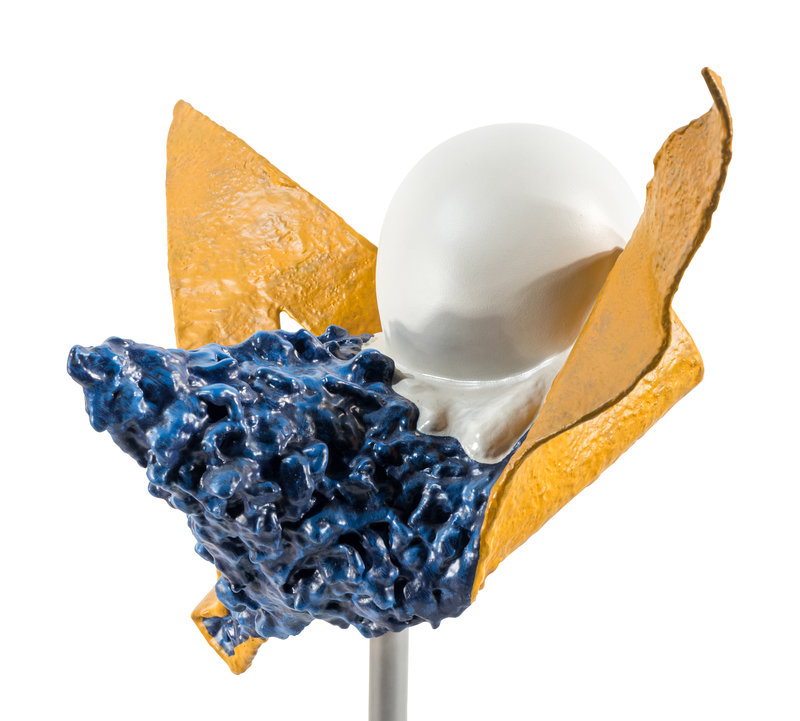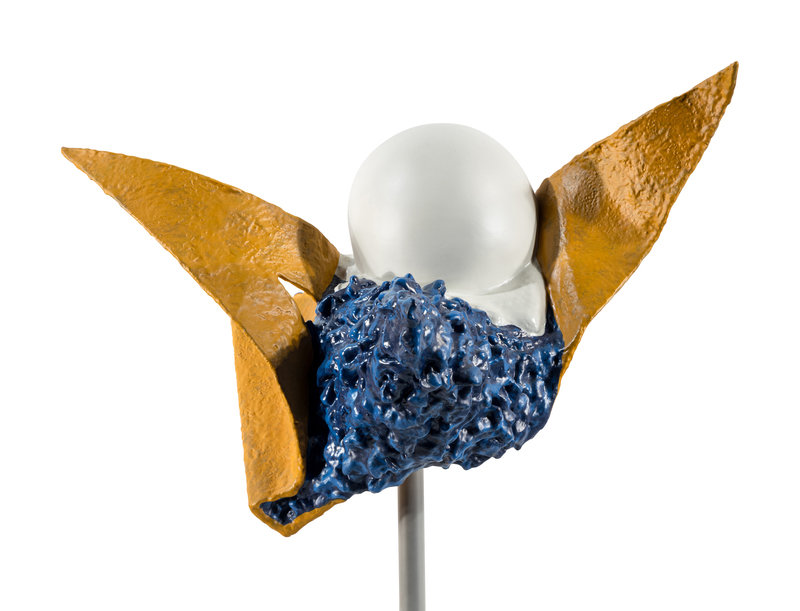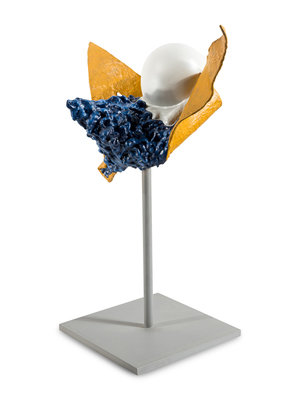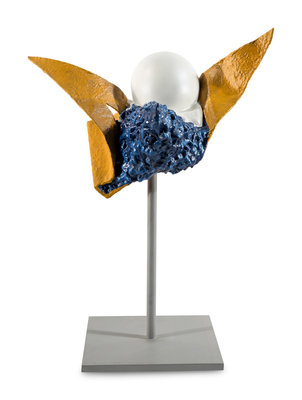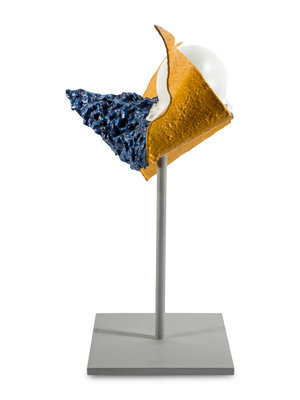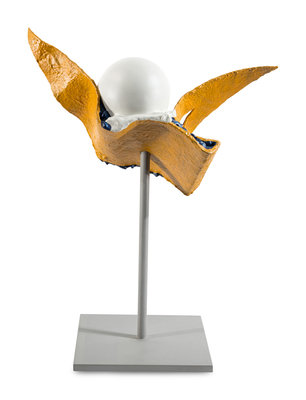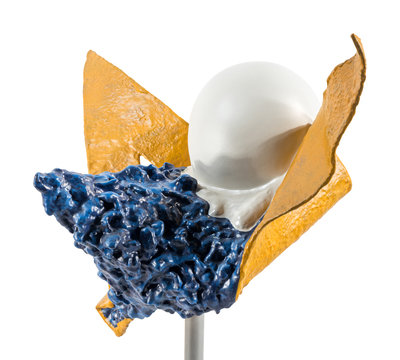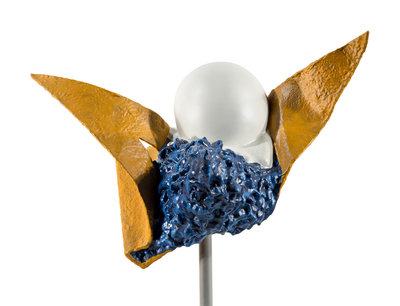Provenance:
Grant Selwyn Fine Art, New York
Acquired from the above in 1999
Lot Essay:
So, What’s for Dessert?
Atop a metal base, two wings of a golden color and flaky texture peel away in opposing directions. Nestled in-between them is a sumptuous and shiny blue form that juts outward into space. A perfectly round orb of creamy white crowns the object. This evocative and enticing cast aluminum sculpture calls to be examined in the round. With an unlimited number of perspectives this work’s rich colors, varying textures, and bold shapes invite moments of illuminating abstraction. And yet, as the mind searches, recognizable and delicious imagery surfaces, it is an American cultural icon, a slice of humble blueberry pie with a scoop of vanilla ice cream.
Claes Oldenburg (American, 1929-2022), globally recognized Pop Art sculptor, is famous for reorienting everyday objects into fanciful and large scaled artworks where anything from a mundane clothespin to a joyful ice cream cone are reimagined. After World War II, an explosive rise of mass media and consumerism occurred. Because of this, part of the new post war American experience included relentless exposure to advertisements and commercial imagery. So inundated by mass media, many artists from the mid 1950s to the late 1970s, like Andy Warhol and James Rosenquist, were inspired to repurpose these images into their art, shifting their focus from creating unique subject matter to reorienting what now already existed for a wide audience.
Focused on form and content, Oldenburg often took symbols of American culture like the hamburger, and pushed traditional art boundaries in terms of scale, medium and location. In doing so, Oldenburg was taking influence from Dada and minimalist art movements. Dadaism directly challenged the idea of “high art” as many pop artists took strides to dismantle traditional art hierarchies. Oldenburg’s sculptures were often immersed into outdoor and indoor public spaces, which emphasizes his belief: “I am for an art that is political-erotical-mystical, that does something more than sit (on its ass) in a museum.” Taking inspiration from minimalism, he believed that a work of art is contingent upon a viewer’s physical relationship with the object--making art that both occupies and activates a space.
Oldenburg’s early life was spent between the United States, Sweden, and Norway. Shortly after his robust education, taking him from Yale University (1946-50) then to the School of the Art Institute of Chicago (1952-54), the artist moved to New York where he was enamored with the liveliness of the city and stimulation of imagery. Shifting from his early days of constructing large, fluffy sculptures with canvas and cloth materials, Oldenburg is particularly known for his later style that he referred to as, “Colossal Monuments.” During the 1960s and on he often collaborated with art historian and curator, Coosje van Bruggen, his wife, on these monumentally scaled sculptures. Pieces such as Cupid’s Span in San Fransisco and Spoonbridge and Cherry in Minneapolis are just two examples of the couple’s beloved and massive sculptures that illuminate the idea of culture as nature.
